步驟1:耗材
1米2mm內(nèi)徑/2.6mm外徑硅管(這個(gè)尺寸很重要且無法更換)
1米厚的硅管,例如5mm內(nèi)徑/1mm外徑(實(shí)際上不是
環(huán)氧膠(防水密封)
3瓶蓋,底部可輕松粘在一起
Superglue
Arduino Micro或任何其他類似系統(tǒng)
3種彩色LED選擇(可選)
力敏電阻(可選)
Towerpro 9g伺服(或(等))
土壤濕度傳感器(我使用水深傳感器結(jié)束可能不太理想)
大量接線
3.3k電阻器
可以做0.2毫米層的3D長絲打印機(jī)
PLA長絲
微小的松緊帶
1撲克牌(或同等產(chǎn)品)
第2步:蒼鷺的水泵
H eron是亞歷山大的杰出數(shù)學(xué)家和工程師。而這個(gè)泵是他的一個(gè)設(shè)計(jì)的變種。它的工作方式是重力迫使水通過硅管從頂部瓶子流到底部瓶子。這導(dǎo)致底部瓶子中的水位上升,迫使空氣從底部瓶子到中間瓶子,這又增加了壓力。然后通過將水從中間底部推到需要的地方來減輕這種壓力。這樣做的另一個(gè)好處是,由于管道尺寸和高度差異存在顯著差異,您實(shí)際上可以將水泵送到高于泵頂部水位的水位。使用簡單的重力泵無法做到的事情。
為了使這個(gè)漂亮的設(shè)備工作,你需要鉆一些孔,如圖所示安裝管道并確保一切都是防水的同樣重要的氣密。為此,您需要使用正確的膠水。
注意:頂部的蓋子有一個(gè)小孔,以防止水從頂部瓶子移動到底部瓶子時(shí)產(chǎn)生真空。
為了啟動水流,您需要用水填充中間瓶。然后簡單地將水加到頂瓶中。
步驟3:帶有附加水傳感器的3d打印伺服控制閥(Mikey77)
對于這一步,我將引導(dǎo)您進(jìn)入mikey77的另一個(gè)3D打印伺服控制閥的指導(dǎo)。
它的設(shè)計(jì)很整潔,但我做了必須做一些簡單的調(diào)整才能使它與水一起工作。
需要一些松緊帶將mikey77的閥門中的活動部件拉回到位。我結(jié)束了從撲克牌上切下一條小條帶,并將其擠在系統(tǒng)中的硅管旁邊,以便能夠完全阻止水流。只是為了額外的擠壓。最初我無法完全停止水流。
之后,水傳感器只是超級粘在閥門控制器上,如圖所示。并插入植物的土壤中。
步驟4:接線
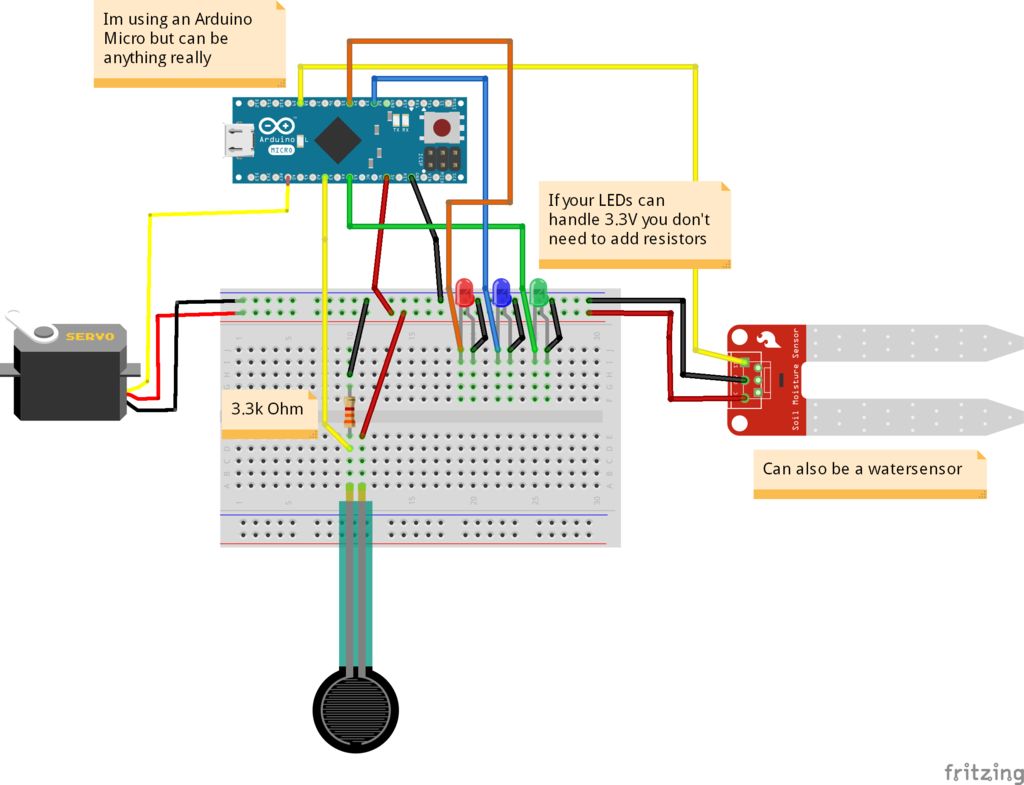
其中一些組件是可選的,只是那就是花哨。
第5步:代碼
const int waterSens = 9; //define water sensor
const int led2 = 2; //define blue led to pin 2
const int led4 = 4; //define red led to pin 4
const int ledA5 = A5; //define green led to pin A5
int fsr = A2; //define fsr read to pin A2
int waterVal; //define the water sensor value
int fsrRead; //the analog reading from the FSR resistor divider
int value = 375; //starting value for servo
#include //load servo from library
Servo servo1; //name the servo used for reference void setup() {
pinMode(led4, OUTPUT); //set led as an output
pinMode(led2, OUTPUT); // set led as an output
pinMode(ledA5, OUTPUT); // set led as an output
pinMode(waterSens, INPUT); //set water sensor as an input
Serial.begin(9600); //start the serial port at 9600 bauds
pinMode(9, INPUT); // attach watersensor sensor output as an input
pinMode(A2, INPUT); // attach fsr output as an input
} void loop() {
waterVal = analogRead(waterSens); //read the water sensor
fsrRead = analogRead(fsr); // read the force sensor value
Serial.print(“FSR reading = ”); // for serial monitoring
Serial.println(fsrRead); //print the value of the FSR resistor to the serial monitor
Serial.print(“WaterSensor reading = ”); // for serial monitoring
Serial.println(waterVal); //print the value of the water sensor to the serial monitor // this if statement is for when the resevoir needs a refill
if (fsrRead 》= 900) { //force sensor value should be adjusted to your own needs
servo1.attach(A0); //attach servo to A0
digitalWrite(ledA5, LOW); // if the water sensor senses water turn the green led off
digitalWrite(led2, LOW); // if the water sensor senses water turn the blue led off
digitalWrite(led4, HIGH); // if the water sensor senses water turn the red led on
int value = 837; // set a value for the servo position (this is similar to analog outputs
int servoPos = map(value, 0, 1023, 0, 170); // map that value to the positions of the servo
servo1.write(servoPos); // make the servo go in position
delay (250); // give the servo time to go into position
servo1.detach(); // detach servo to avoid buzz noises at low voltages
delay (10000); // delay of 10 seconds
} else{ // this else statement is for when the resevoir has sufficient water
-
Arduino
+關(guān)注
關(guān)注
188文章
6489瀏覽量
189966
發(fā)布評論請先 登錄
鋼鐵工廠冷卻循環(huán)水系統(tǒng)數(shù)據(jù)采集解決方案
水電站技術(shù)供水系統(tǒng)方案概述及技術(shù)優(yōu)勢
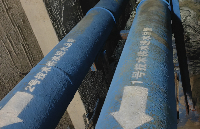
LITESTAR 4D應(yīng)用:植物照明設(shè)計(jì)
高效自動化Profinet轉(zhuǎn)EthernetIP網(wǎng)關(guān)在排水系統(tǒng)中的應(yīng)用
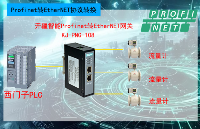
LITESTAR 4D應(yīng)用:室內(nèi)植物照明模擬
集中空調(diào)冷熱源與空調(diào)水系統(tǒng)的監(jiān)控
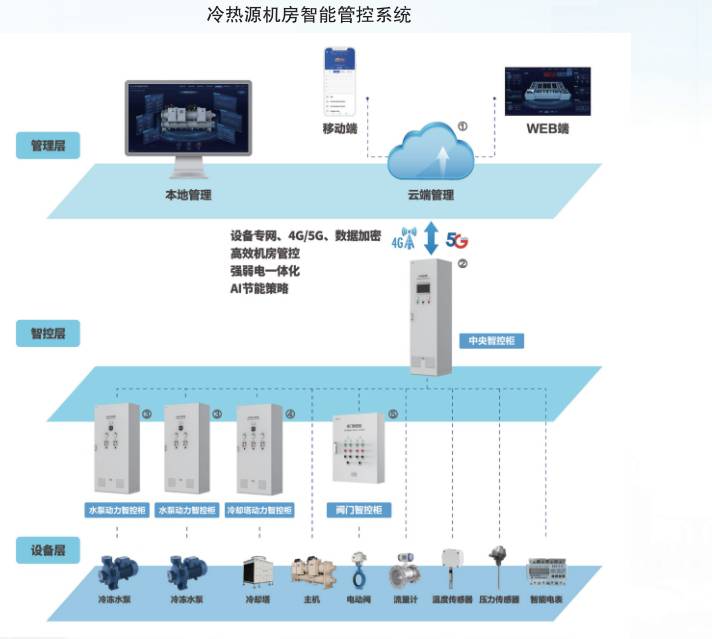
養(yǎng)護(hù)新科技!三思照明全光譜支架植物燈更“懂植物”

水系電解液寬電壓窗口設(shè)計(jì)助力超長壽命水系鈉離子電池

PLC恒壓供水系統(tǒng)如何實(shí)現(xiàn)遠(yuǎn)程監(jiān)控與遠(yuǎn)程維護(hù)
多晶硅生產(chǎn)冷卻循環(huán)水系統(tǒng)數(shù)據(jù)采集解決方案
LITESTAR 4D應(yīng)用:溫室植物照明案例
城市排水系統(tǒng)監(jiān)控方案
人工光植物工廠 紫外LED光照系統(tǒng) 一般技術(shù)要求
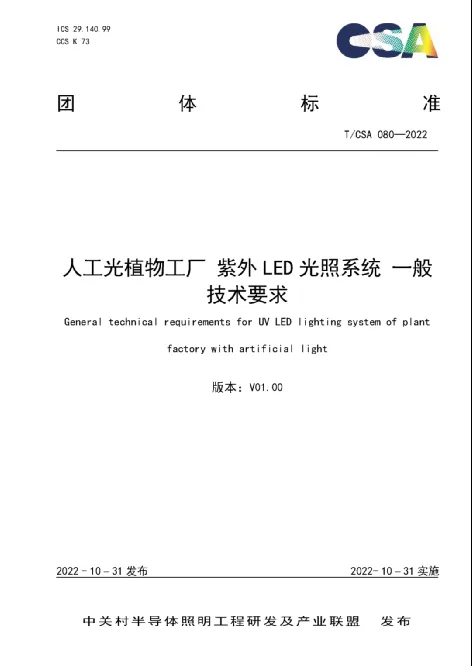
中央空調(diào)水系統(tǒng)常見問題及故障分析
熱水系統(tǒng)物聯(lián)網(wǎng)遠(yuǎn)程監(jiān)控運(yùn)維如何實(shí)現(xiàn)
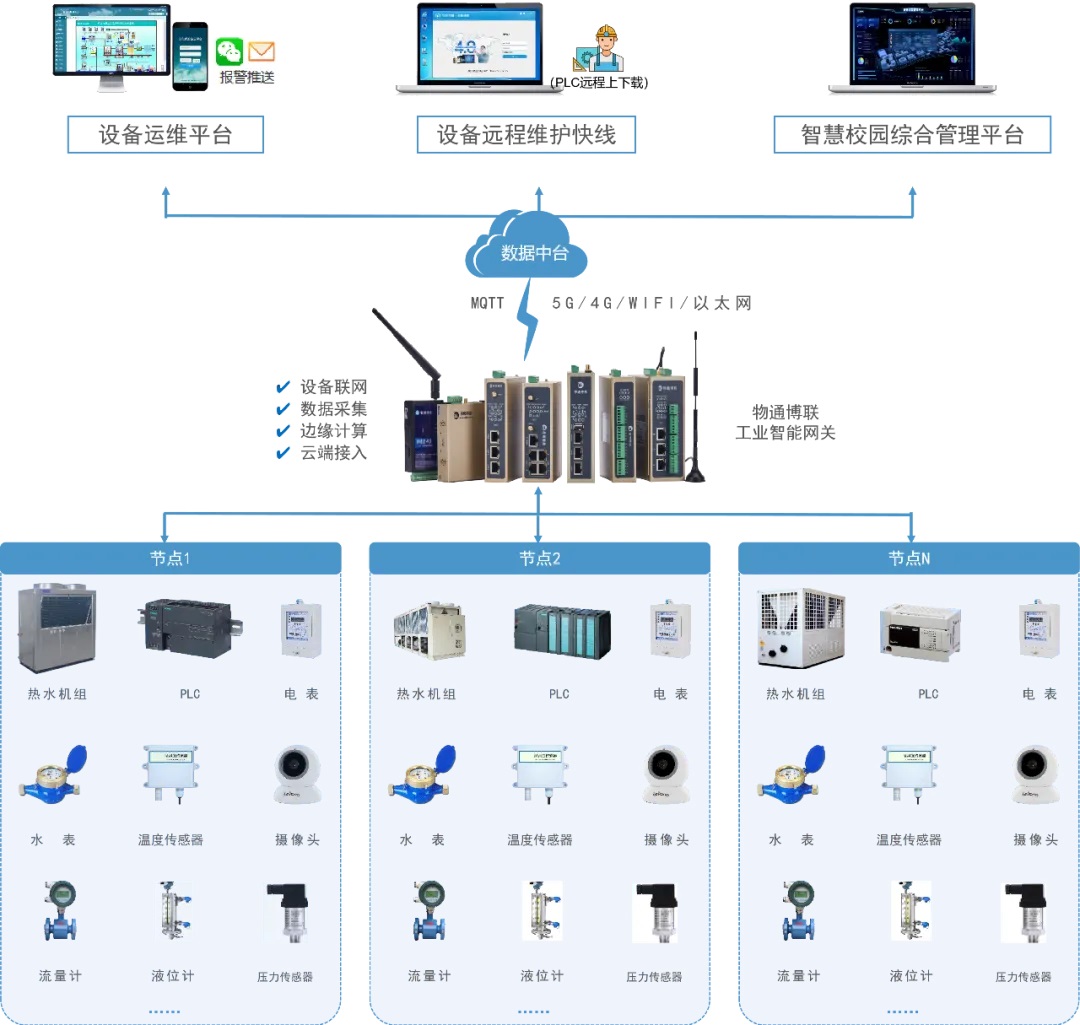





 植物自動澆水系統(tǒng)的制作
植物自動澆水系統(tǒng)的制作










評論